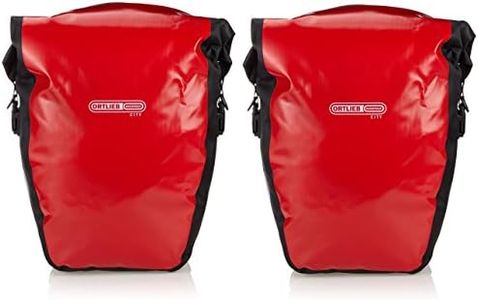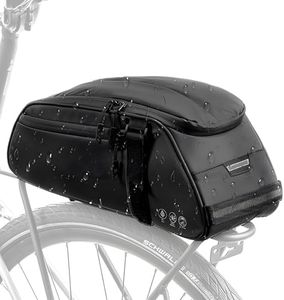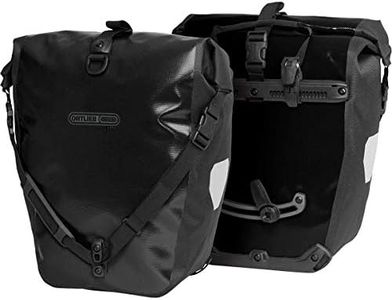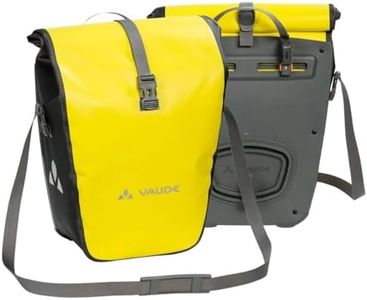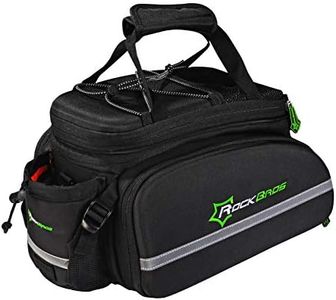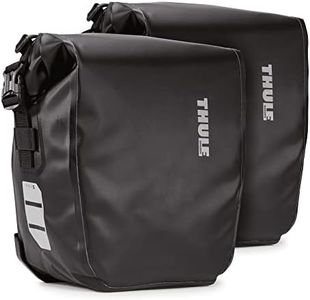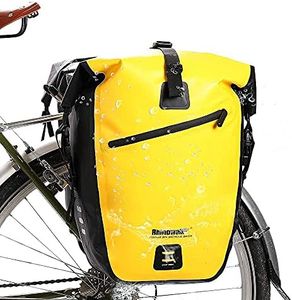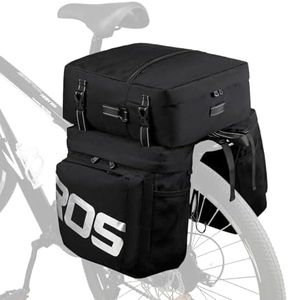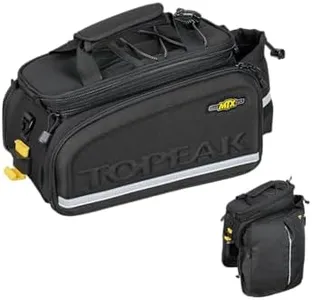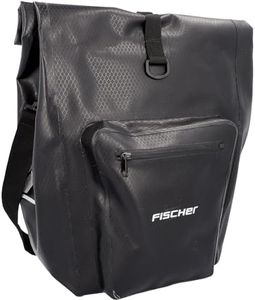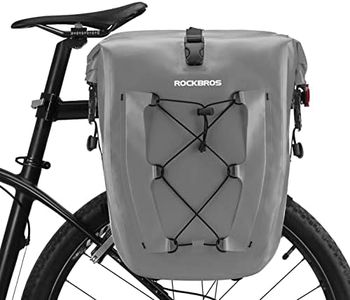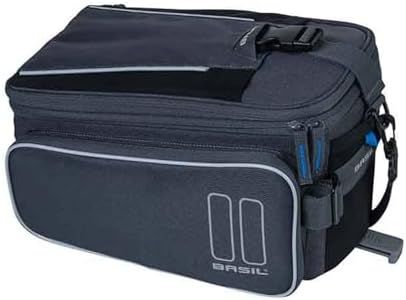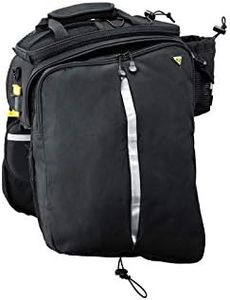We Use CookiesWe use cookies to enhance the security, performance,
functionality and for analytical and promotional activities. By continuing to browse this site you
are agreeing to our privacy policy
10 Best Bicycle Pannier Bags
From leading brands and best sellers available on the web.Buying Guide for the Best Bicycle Pannier Bags
Choosing the right bicycle pannier bag can make your cycling experience much more convenient, especially if you carry items regularly. Pannier bags attach to racks on either side of your bike’s rear or front wheel, allowing you to transport groceries, gear, or work essentials securely. It's important to pick a pannier bag that fits your riding habits, storage needs, and the type of journeys you typically undertake. Thinking about how often you'll use it, what you plan to carry, and the conditions you'll ride in can help you narrow down your options.CapacityCapacity refers to the amount of space the pannier bag provides, usually measured in liters. This spec is important because it determines how much you can carry. Small panniers (10-20L) are great for light loads, quick commutes, or minimalist errands, while medium panniers (20-35L) suit everyday commuting and moderate shopping needs. Large panniers (35L and above) are best if you often carry groceries, gear for long trips, or need extra space for different items. Think about your typical load—a compact bag is lighter and easier to handle, but if you often carry extra clothes, supplies, or food, more capacity will be much more useful.
Water ResistanceWater resistance tells you how well the bag protects your belongings from rain and road spray. This can range from water-repellent materials, which keep out light showers, to fully waterproof construction that allows the bag to be submerged briefly without leaking. If you ride in all weathers or live in a rainy area, waterproof panniers provide peace of mind that your items will stay dry. Occasional riders or fair-weather cyclists may be fine with basic water resistance. Consider your climate and whether you routinely carry sensitive items like electronics or papers.
Attachment SystemThe attachment system is how the pannier connects to your bike rack. This can be simple hooks, locking clamps, quick-release systems, or even straps. This specification matters because it affects stability and ease of use—is it quick to take on and off, and does it stay secure while you ride? Simple hook or strap systems are straightforward and may be sufficient for light use, but frequent commuters or people carrying heavier loads will appreciate more secure, vibration-proof mechanisms. Test how easily you can attach and detach the bag, and make sure it fits your bike rack’s size.
Durability and MaterialDurability depends on the materials and construction of the pannier, often made from nylon, polyester, canvas, or heavy-duty plastics. Strong, reinforced stitching and thick materials resist wear and tear, important for daily riders or those carrying heavy loads. Lighter materials save weight for short commutes or occasional use, while sturdier, abrasion-resistant options are better for touring or frequent urban use. Think about your usage: if your rides involve rough conditions or you use the bag daily, durability should be a priority.
Compartments and OrganizationThis refers to the internal and external pockets, dividers, and organizational features the pannier includes. Some bags are simple open sacks, while others have multiple pockets, laptop sleeves, or organizers for small items. If you carry lots of small items, work gear, or need things easy to access, opt for more divisions and pockets. For bulkier or irregular loads, a spacious main compartment may be more versatile. Consider how you like to organize your items and pick a bag layout that matches.
Visibility FeaturesVisibility features refer to built-in reflective strips or bright colors that make you more noticeable to other road users, which is especially important for riding in low-light conditions or at night. If you ride in the dark or in busy urban traffic, reflective panels or light mounts on your pannier can make a big difference for safety. Daytime-only or trail riders may not need as much visibility, but it’s always a useful safety bonus to have.
Ease of Carrying Off the BikeThis covers features like shoulder straps, handles, or convertible designs that make the pannier easier to carry when you’re not riding. If you regularly bring your bag into shops, work, or homes, a pannier that converts easily to a shoulder bag or backpack will simplify your routine. If you rarely remove your pannier from the bike or just use it for direct transport, this may matter less. Think about your door-to-door journey and how often you’ll want to carry the bag away from your bicycle.
